
Title: Fighter Pilot’s Daughter: Growing Up in the Sixties and the Cold War
Author: Mary Lawlor
Publisher: Rowman and Littlefield
Pages: 323
Genre: Memoir
Fighter Pilot’s Daughter: Growing Up in the Sixties and the Cold War tells the story of Mary Lawlor’s dramatic, roving life as a warrior’s child. A family biography and a young woman’s vision of the Cold War, Fighter Pilot’s Daughter narrates the more than many transfers the family made from Miami to California to Germany as the Cold War demanded. Each chapter describes the workings of this traveling household in a different place and time. The book’s climax takes us to Paris in May ’68, where Mary—until recently a dutiful military daughter—has joined the legendary student demonstrations against among other things, the Vietnam War. Meanwhile her father is flying missions out of Saigon for that very same war. Though they are on opposite sides of the political divide, a surprising reconciliation comes years later.
Fighter Pilot’s Daughter is available at Amazon.
Here’s what reviewers are saying about Fighter Pilot’s Daughter!
“Mary Lawlor’s memoir, Fighter Pilot’s Daughter: Growing Up in the Sixties and the Cold War, is terrifically written. The experience of living in a military family is beautifully brought to life. This memoir shows the pressures on families in the sixties, the fears of the Cold War, and also the love that families had that helped them get through those times, with many ups and downs. It’s a story that all of us who are old enough can relate to, whether we were involved or not. The book is so well written. Mary Lawlor shares a story that needs to be written, and she tells it very well.”
―The Jordan Rich Show
“Mary Lawlor, in her brilliantly realized memoir, articulates what accountants would call a soft cost, the cost that dependents of career military personnel pay, which is the feeling of never belonging to the specific piece of real estate called home. . . . [T]he real story is Lawlor and her father, who is ensconced despite their ongoing conflict in Lawlor’s pantheon of Catholic saints and Irish presidents, a perfect metaphor for coming of age at a time when rebelling was all about rebelling against the paternalistic society of Cold War America.”
―Stars and Stripes
First Chapter:
In the 1920s, when Jack was a child, a framed photograph of his
father stood in the living room of their house on Richmond Avenue in
South Orange, New Jersey. My grandfather, Edmond Vincent Lawlor, had
come
to the United States in the early years of the twentieth century, when
he was barely into his teens. On September 19, 1916, he became a U.S.
citizen. Not long after, he signed up for Officers Candidate
School
at Princeton and got ready to join thousands of others in The World War,
later renamed World War I. The picture on the table shows him in
uniform, stiff with duty. As a household decoration, it signaled the
deep connection between the nation and the family, demonstrated through
military service.
Papa, as we called our grandfather, gives a faint smile in the picture.
There’s
nothing macho in this expression, no hint he was imagining himself
heroic. He was a devout Catholic and would have understood his soldierly
commitment as God’s will. Fighting on the side of the
Yanks also
gave him a chance to show his affection for America. This was the
country that had taken him in, given him a job in a powder factory,
offered a new life to his mother and aunt.
World War I was still a
pulsating memory when Jack was a boy. For him it would have been a murky
tale of faraway places and mysterious danger. The photo showed his
father on the edge of all this, an adventurer and a stunningly different
person from the cheerful, gray-suited insurance salesman who came home
every day at six o’clock.
Papa Lawlor at Officers Candidate School
near the end of WWI Edmond never went to the war. It ended by the time
he finished OCS. But Iremember that picture of him in uniform, there in
the many living rooms of my own early years, a reminder that Papa was
not only the mild, affable Irishman we loved, but a man who knew how to
use a gun, had been ready to expose himself to violence on behalf of our
country.
I say Papa smiles in the photo, but when I look at it now
the expression isn’t so easy to read. The face is actually pretty blank.
You could say it’s a mask, an empty screen hiding Papa’s feelings, even
his sense of
himself as a Navy ensign. The eyes are aimed slightly
to his right, off camera, as if he’s not entirely engaged in the
portrait. If you keep looking, movement stirs in his face. It’s in the
eyes of the beholder, of
course, but he begins to look like he’s
ready for something else and can barely stand the still pose. Is this
simply his characteristic lack of vanity?
Does he want to get going with the soldiering? Or is he itching to get out of the uniform, go home where he belongs.
As
Jack came to the end of his school years, the laughing family and shady
streets of South Orange started to look tame. He tried a few semesters
at Seton Hall University, not far from home, but his performance was
less than impressive. Letters show he was already captured by thoughts
of himself far away, across the continent, perhaps the ocean. But he
never looked down on his local, New Jersey world. It was the setting of
boyhood stories he told us when we were kids. It was the place he gladly
returned to after hot summer days in downtown New York, working as a
messenger for the Japanese Cotton and Silk Trading Company. South Orange
was his mother’s world. It was where Nan Ferris Lawlor presided over
his beloved brothers and sisters—“my kin,” as he jokingly called them.
In his first uniform, standing on the dappled lawn of the house on
Richmond Avenue, he grins at the camera, his arm around her. He looks
happy to be so grounded there, and so ready to go away. He wanted
adventure. He wanted to go to sea, to learn navigation. And he wanted to
fly.
In March 1942 Jack enrolled as a cadet at the U.S. Merchant
Marine Academy. Established by Congress in 1938, the Merchant Marine
Cadet Corps trained sailors for commercial ships that could convert to
military
service in times of war. Now, with the demands of World War II
pressing, merchant marines were needed for duty in less time than the
formal curriculum allowed. Jack spent three months in the class
room
at the Academy’s temporary facilities on the Chrysler estate in Great
Neck, Long Island. Courses included seamanship, cargo handling, maritime
engineering, math, and ship construction. He studied
hard and did
well. Letters home, written in an exuberant voice, show how excited he
was to be learning the life of a seaman, getting ready to see the world.
In
preparing for a naval science exam in the spring of 1943, he wrote his
father, “If I don’t pass it at least I tried. I know you’ll be
interested to hear this Dad, knowing how disappointed you were with the
time I wasted in Seton Hall. I realize that myself now, Dad, more than
ever and I’m going to do my best to make up for it.” He was affectionate
with his parents and wrote as if pleasing them mattered a great deal.
For all
his desire to get away from home and out into the world, his identification with the family was absolute.
Gleeful
at what the Merchant Marines were preparing him to do, Jack found
talents he didn’t know he had in the seamanship training, especially in
navigation. For the signaling course, he had to commit
endless codes
to memory. He would have to pass a test that required sending eight
words per minute in Semaphore and another eight in Morse. “It’s going to
be tough,” he complained, “because there is nothing interesting about
it. It’s just plain memory work. But you’ve got to know this stuff on
board ship so it’s a good thing.”
Practicing as an able bodied seaman
was another story. “Yesterday afternoon we shipped an 800 pound anchor
over the side to a barge and there were only three of us to move it.
Today we had quite a thrill. They sent Tex and me aloft to paint the
masts in a boatswain’s swing. Boy oh Boy but you’re away way up when you
do that and when we painted the top part and got down to the spar we
had to crawl out on our bellies to paint the end of the thing. God I
liked to die. That mast was swaying with the ship and me out on the yard
that was bending under my weight. I’m so darn tired from hanging on
that I can hardly lift the pen. But I think I’ll live.”
With his
six-foot frame, good looks, and rough amiability, Jack made friends
easily. Time with his new pals was often brief, as the advanced pace of
Merchant Marine training meant assignments were given out
quickly. In
letters home he complained at having to say goodbye. “I made quite a
friend with this guy Tex. . . . But he’s due to go home in two weeks.
Gosh it’s lousy this way your friends come and go so quickly
in a
place like this.” As Jack’s first voyage approached, he was glum about
the separations. “There are only 4 of us left out of our whole gang
since this afternoon, for 3 shipped out then. . . . Boy it really seemed
tough
saying goodbye to those 3 guys this afternoon and we’re a pretty
lonesome bunch tonight.” The letter has a prophetic tone to it. There
would be a lot of this in years to come. Jack would soon toughen up,
learn to slap the guys on the back and say good-bye fast. He knew he
might never see them again, and he stopped writing home about it.
Reading
this letter about the three guys shipping out so many decades later, I
feel badly for my dad. Then I see mornings on the tarmac when Jack is
leaving us for some long-term mission. And the sight of a neighborhood
comes up, receding in the back window of our car. Friends, then
boyfriends wave good-bye. Of course, for Dad and his remaining pals
another kind of loss lurked at the sight of the waiting
sea bags and in the last, terse good-byes. Where they were going death lurked right beside the adventures.
On
May 11, 1942, he got his shipping papers. Rumors had been circulating
that his cohort would have their first orders soon. Jack’s letters are
ambivalent about it. Twice he uses the word terrific where
terrible
should be. A few paragraphs after announcing the news of the shipping
papers, he writes, “It seems terrific to think that I’ll be actually
leaving home for such a long time. I keep trying to picture what it’s
going to be like. I just dread the thought of the dam last day when I
have to say so long to you all.” A week later, he and his pals set out
by train for San Francisco where they would be assigned to a ship. In
the club car with his friend Ray Barrett he penned a note, posted by the
porter from Pittsburgh, describing his sad self in not entirely
convincing terms: “Well that dreadful day when I had to leave you is
almost past and let me tell you the big tough guy who never got homesick
isn’t so big and tough any more and this afternoon at Penn Sta he was
plenty homesick. But after we fastened up we had a good chicken dinner
for $1.65 less 10% for the uniform. I felt much better. But it was
terrific leaving you.”
In San Francisco, before reporting for ship
duty, he had the time of his life. He and his friends were treated like
visiting celebrities. “I’m in the best place in town, the Hotel Francis
Drake, and a gal just took my picture. I’ll send you one.” In the same
letter he tells them “our picture was in the S.F. Chronicle. I’ll send
you one of those too! The S.F. Chamber of Commerceis having a National
Maritime Day and we were picked to pose for the paper.” He sent a
clipping along, a photo of himself and a fellow cadet in dress uniform,
smiling as they explain the details of a model cargo ship bridge to a
San Franciscan named Virginia Haley. It’s hard to tell whether the
center of the photo is the ship model, Dad’s grin, or Haley’s legs. At
the Persian Room on May 21, he laughs at the camera in the company of an
unnamed actress in a white pillbox hat. The next night, at Charlie
Low’s Forbidden City, a supper club on Sutter Street, he stands beside a
local actress, looking awkward but dapper nonetheless. Another night in
the Persian Room, Jack
glances at the photographer while talking
with Ray Barrett and another friend from the Academy. Over cocktails and
smokes, they’re obviously enjoying themselves, but something serious
hovers between them. Ray wrote on the inside of the photo sleeve, “We
went to the Academy together and now we’re going to sea together. Need I
say more than all the luck in the world to you?” Amid the dancing and
cocktails and the photographers, they were having a ball. They were also
thinking about what was coming next.
He was assigned to the Grace
Line’s Santa Clara. “The ship is a corker—it’s big, fast and well armed
(Thank God),” he wrote to the family. “Our stateroom was a mess when we
first got into it but today we fixed it up and it’s pretty nice. We have
plenty of room, our own bath and lots of closet and locker space. There
are three of us in the room and we get along swell. The meals are swell
and we eat in the officers’ mess. It’s a break being on a troop ship,
because the food is always extra good on them and besides they are well
protected.” Earlier, still in San Francisco, he had met some of his
superiors and written home, “the officers are swell guys and
surprisingly young. We are with the third mate tonight and the girls
[Jack’s sisters, Ann and Marg] would go nuts over him. We are learning
more than I thought it was possible for me to commit to my thick
cranium, just through these young fellars. The skipper is only 35. How
about that?” In ten weeks they would be back in New York. Jack was out
of his head with excitement but mindful of his attachment to home. In a
postscript, he notes “I’m damn happy, but a little lonesome.”
By the end of his first year, Jack had been at sea for nine months.
Still
he kept in touch with South Orange regularly. He addresses the
household as “Dear Home” and signs his letters “Salty.” Expressions of
affection intensify as time, distance grow. On the eve of his first trip
to
the Pacific he wrote: “You have said you were proud of me. Well
I’m pretty damn proud to call myself one of you.” At times the words
have a faint ring of guilt—for being so far from home, for having a
great time
at it: “You are the grandest Mother and Dad a fellow could
have and I’ll always look forward to the days I can spend with you
again.”
Jack was out on a cruise when Edward Haugh, who would soon
become his close friend and brother-in-law, entered the Merchant Marine
Academy in 1943. Five years later Ed married Frannie’s younger
sister,
Mary Ellen. Like a mirror opposite of our own family, Mary Ellen and Ed
had four sons, more or less our ages. Much later, after my dad and
uncle had become experienced seamen and pilots, after they’d
seen
violent action in war, it was the Haugh boys who learned about the most
dramatic events, the violent ones. As girls and even women, we were
never told those things. Bits and pieces reached our ears, fragments of
stories about crashes and escapes through enemy territory. We would
wonder, mystified, about where our father had been, how these things
happened, what he felt and did. I imagined veiled scenes in dark
jungles, Dad slipping through the high growth, his terrified gaze
hunting the perimeter. He would be operating on deadly survival
instincts, hungry, thirsty, wet. A specter as frightening as the enemies
who missed him, he crept in absolute silence, the blue eyes, like
flashlights, pointing the way. Or he was down in the sea, clinging to
the wing of a plane, waiting for some helicopter to lift him out. These
images came and went whether he was home or away.
During the return
cruise to New York in early August, Jack’s exhilaration with life as a
Merchant Marine came under the cloud of one particular commander. The
man threw his weight around, made his presence felt among the cadets,
making them do unnecessary things, just because he could. Jack got in
his sights and found himself in a power struggle with a personal charge
to it. He restrained himself from
telling the guy off when he
demanded that a course, checked for accuracy several times already, be
backed up with a series of alternative routes—a job that called for
meticulous, time consuming calculations.
Jack took a deep breath and
performed the useless task but swore he would get out of this man’s
clutches. Landed in New York again in September, he and his buddies
proceeded to the Merchant Marine
office downtown to sign up for
another trip out, but the functionary in charge refused to put them
together on a different ship. Word had made its way from the dock. Jack
and his best friend, George Roper, decided “to hell with them.” As
Merchant Marine cadets, they had already been sworn into the Navy on
reserve status. The Navy could give them something the academy couldn’t.
They could learn to fly. The next day the two of them walked north to
the Naval Recruiting Office
and enlisted for active duty.
In the
Merchant Marines, the cadets had been introduced to the ancient
discipline of navigation. Always good at math in school, Jack, George,
and my uncle Ed had taken it up like naturals. Mathematical
representations
were as real to them as the ground itself. Even in retirement, their
desks were littered with compasses, rulers, pencils and scraps of paper
covered with calculations. The practice of charting seas
gave them
confidence in moving through watery space, like it was lined and
readable as a series of roads. Success at plotting a course at sea, as
Uncle Ed explained not long ago, rattled their imaginations. They
wondered how it would be to navigate the sky.
In the autumn of 1942,
Jack and George began flight school at the Naval air station in New
Paltz, New York, north of West Point. Ed came up the following year.
Jack’s notes for the first course, in a folder la
beled in block
print “Aircraft Identification, Mr. Oakley,” show he was already
dedicated to learning everything he could about airplanes. In a careful
hand he lists “Four main wing and plane relationships,” “Wing
Descriptions,” and “Tips.” He copies the markings for Navy and Army
aircraft alphabetically. A hand-drawn graph, the boxes neatly ruled,
identifies the names of airplanes with their wing and tip
configurations; engine and armaments; tail and fuselage surfaces; speed,
ceiling and load range. Forty-two different planes appear in the
six-page chart.
Photos, cut from catalogs and neatly taped to the
notebook pages, show the Grumman G-21, the F4F Wildcat, the Martin PBM-3
Mariner (a “flying boat”), the Vought-Sikorsky OS2U-1 Kingfisher, the
SB2U-3
Vindicator (“a dive bomber”), and many others. British planes
appear—the Hawker Hurricane IIc (“with bombs slung under the wings”),
and the Handley Page Halifax. A page is set aside for Japan’s Kawanishi
Type
94 (a bomber for which “no information is available on the location of
the bomb bays”); another for Germany’s Dornier DO 17 (“a reconnaissance
bomber”) and the infamous Messerschmitts—the ME
110 and
ME109F.Captions indicate the wing and tail markings and the
all-important size, speed, and range specifications. For survival’s
sake, Jack would have to get these in his head. Notes in the margins
indicate he was memorizing speed, altitude, and bombing capabilities of
all the aircraft.
In March 1943, he wrote his father, “I’ve got
almost four hours in the air now and I ought to solo in seven or eight,
which should be some time this week . . . I’ve got a damn good
instructor and he drums those
fundamentals into us all the time. I’m
due to go upstairs to learn a series of ‘spins.’” Upstairs referred to
four thousand feet, a dramatic, new level. The excitement of flying so
high, of getting to take the airplane to the limits of its capacity,
continues a few days later: “Boy those spins are something. We climbed
to 4000, cut the motor and turner her nose straight up and put the
rudder hard left and bingo! Down she goes nose first spinning like a
top. We do two complete spins and come out of it.”
Shortly after, he
made his first solo. The plane was an Aeronca Defender. He told his
brother Edmond about it later, but no description of this prime moment
appears in the letters. Soon he sent his
mother an account of what
flying alone was like. “Walt, my Instructor, let me go out over our area
alone yesterday afternoon for a whole hour.
You can’t see the area
from the field so I had quite a time for myself. First I practiced high
work and went up over the cloudbank at about 7,000 feet. You never saw
anything so beautiful in all your life just you
the plane and the sky
and those big white pillows below you. Super stuff.” Already he felt
confident enough with the aircraft to start fooling around. “After that,
I went down very low and practiced forced landings and made sure the
fields were pastures and Boy you ought to see those dam old cows run.
When I realized how much fun it was I tried dive bombing them and hot
dog if ‘Bossie’ didn’t dam near give birth to a goat. Oh you should of
seen them go—” He signs the letter “Orville Wright.”
Training
continued into the summer of 1943 at Chapel Hill, North Carolina, where
he started doing acrobatic hops; then at Bunker Hill, Indiana, where his
enthusiasm grew explosive. “The flying is really terrific,” he wrote
his mother and father. “There are three stages you have to get through.
First you have A stage, that’s just safe for solo and then B stage,
that’s ‘S’ turns and slips to circles and wingovers. Then in C stage you
really start flying. That’s acrobatics and night flying and those
acrobatics include everything, slow rolls, snap rolls, Immelman’s and
inverted spins and falling leaves and every other tough one you can
think of.”
During
those months at Chapel Hill, Jack went through a rigorous athletic
program, including a week each of track, swimming, football and boxing.
The cadets were graded for each sport. Competition for strong marks was
high. On August 5 he wrote his parents, “I got my boxing marks yesterday
and today. I didn’t make out too good yesterday. I lost my fight but
today I made up for it. I won by a T.K.O. (that means they had to stop
the fight because the guy I was fighting was pretty badly cut up).”
Without another word about this, he moves on to his successes in
football. He had made the battalion squad, a first for his
platoon.
His father must have written expressing concern about the August 5
account of leaving his boxing opponent “pretty badly cut up.”
On the
thirty-first, Jack wrote, “You sounded a little worried about my
reaction to that fight I had. Well it’s O.K. Fact is I’ve made pretty
good friends with the guy since and he wasn’t hurt too much anyway.”
This
is the first evidence of Jack’s capacity for combat. The athletic
schedule at Chapel Hill was aimed at sharpening reflexes for just this
purpose. In late August he described to his mother how wrestling was
simultaneously
training in hand to hand combat: “This hand to hand is the coldest
stuff man ever thought up. It was explained to us this morning as the
ways of quickly killing or disabling permanently a man with
only the
weapons God gave us. We’re being taught to gouge out a man’s eyes and
bite off his ears and bite into his jugular vein in his throat and every
conceivable dirty stunt in the books.” If the “dirty stunts” seemed
repellent to Jack and the detailed description a way of absorbing the
shock, they must have been nothing short of shocking to his mother.
Why he would submit this information to her is something of a mystery.
Sharing
scenes of violence with women was not a practice he would continue.
During these years as a young flyer, everybody in the family served in
the crucial role of audience for his adventures.
Jack’s preferred
vision of military life at this point was far and away a vision of
flying, of trying out the heights and lows, the angles and spins an
airplane could take. Ground combat was distasteful and not for him.
In
June of 1944, he earned his wings at the Naval air station in
Pensacola, Florida. At this point, a cadet could chose to continue with
the Navy or to shift to the Marine Corps, and Jack chose the Marines.
That fall he found himself on the west coast again, this time in
southern California.
At the Marine Corps air station in El Toro he
underwent a combat conditioning course. “You would think we were going
through infantry school instead of being aviators. It’s very much
similar to Chapel Hill
only a lot tougher. We start at the crack of
dawn and do close order drill, exercises and bayonet drill until
sundown. And then to bed and no kidding I’m there by seven. It’s doing
good, I guess.”
But El Toro meant more flight school too. By now he
was tired of being a student. “Well here we are again,” he wrote in
early January of 1945, “back in school. How do you like it? Gee I
haven’t done a damn
thing but go to school since the beginning of the
damn war. But this time I think I’ve got something because these jokers
say that they are going to teach us how to fly every airplane the Navy
uses, from primary trainers to the big 4 engined flying boats. This
month alone we will be flying Avengers, Hellcats, Hell divers.” He had
been through seventy two weeks of flight training, almost a year and a
half as a student. As a professional aviator, he would go back to
“school” periodically to learn the technology of new aircraft. Later
training, however, was more about refining skills he already had, skills
that would eventually come to be recognized as those of a master
aviator.
Jack had been away from home for some time now. He wrote
that he missed the holidays with the family. “I don’t expect we’ll get a
transcontinental for a couple of months yet, but I’ll get there by
gosh. If they
won’t send me over seas I’ll get there by hook or
crook.” Aware of the ambivalence in his phrasing and the muddiness—won’t
instead of don’t and the open-ended meaning of there—about what he
really wanted next, to go home or “overseas,” which meant to the war, he
adds in parenthesis, “to New York I mean.” In spite of Jack’s
exhaustion with being a student, it’s pretty clear as he virtually
chants the names of the airplanes he is about to get his hands on that
what he wants most is to fly and fly some more. The implication is
strong that he wanted not so much to go home but to get further away.
In
all Jack’s letters written from the Merchant Marine Academy, from Navy
flight school, and Marine Corps training, references to the Catholic
religion in which he was raised are sparse and formal. From Navy
pre-flight school in Chapel Hill, North Carolina in September 1943 he
described a field mass he attended at the base stadium. It was a solemn
high pontifical mass, “very pretty and very impressive . . . I sang
in
the choir and we sang the mass of St. Basil and it sounded pretty
good.” But the event is also memorable because his girlfriend Ruth was
visiting from New Jersey. They’d been engaged since before he’d left the
Merchant Marines, but the relationship wouldn’t survive the long
separation to come.
Later that month the base chaplain, Father
Sullivan, asked Jack to manage a fund raising campaign with his outgoing
battalion for the construction of a church. Jack spent a week with a
friend giving “pep
talks” and canvassing. The priest “almost jumped
out of his pants” when they handed over $444.60. Other stories sent home
remind his parents that he’s still a good, practicing Catholic son; but
none of his writing
expresses a deep or conscientious sense of
devotion. In a postscript, he notes, “The chaplain is a grand guy. Have
been to Sacraments” and “Still taking pills and saying Hail Marys.”
If
pressed, Jack would undoubtedly have declared the whole project in
which he was engaged—learning to be a warrior for the good guys—the
deepest sacred duty he could perform. It was the sort of credo he
would
maintain throughout his military career. God, Christ, and the Virgin
seemed to loom for him in a distant sphere. Signs of their benevolence
or wrath might be legible in this-world phenomena, but they
existed
elsewhere. Although he kept an image of Our Lady of Loretto—patroness of
aviators—in the cockpit with him, it wasn’t until after retirement that
he showed a personal, more intimate connection with Catholicism. Maybe
it was there in him earlier, but the letters suggest that for the young
pilot, the more abstract, the more formal his religion, the better it
would work for him.
In May of 1945 he finally set out for the war, to
the site of one of the bloodiest conflicts, Okinawa. Assigned to Marine
Fighter Squadron 222 of the Second Marine Air Wing, he left San Diego
on a troop transport.
He had been waiting for this, for the chance to
get beyond the dress rehearsals of training to the sites of real
action. Excitement beat like a drum. He knew, of course, what horror lay
ahead. The terror was fuel,
already sharpening his senses.
The
well-ordered life at sea, like the round of days on the base, held up a
steady, familiar, world. The repetition of chores, drills, and meals
flattened shipboard experience. Behind the lulling rhythms, however, an
eerie, Melvillian, spell dragged along. One hot day near New Guinea,
when they couldn’t take looking at the gunmetal and the horizon anymore,
Jack and a few others climbed over the edge for a swim.
Shortly
after, the voice of the commander boomed from the deck, ordering them
back on board. Reluctantly but quickly they did as he said. The officer
walked them across deck to the opposite side of the ship and pointed
into the water. It was boiling with hammerhead sharks.
A “shark
shooter,” as Uncle Ed Haugh told me, would normally be stationed at a
lookout point high above the deck when sailors were swimming in Pacific
waters. Protecting the vulnerable crew, the shooter kept a close eye off
the gunwales, ready to fire at any moment. If this protection was in
place, it didn’t dispel the commander’s terror at sight of the enormous,
T-shaped fish, thronging too close to the splashing men.
The
hammerhead shark story was in our heads, told more than once, so vivid
was it in Dad’s memory. He was a good storyteller. He knew how to pace
the action, when to pause, when to raise and lower his
voice. Making a
collective character of the swimmers, he showed with wide eyes and
eager shoulders how dangerously naïve they were. The commander, deep
voiced and rigid, was right, he told us, not because
the hammerheads
proved him to be, but because he was the commander. With loose-minded
people like his younger self to teach and supervise, the commander had
to convey that his word, his order, was reason in itself. Jack’s heart
was not revolting now, as it had to the arbitrary power of the Merchant
Marine officer in the summer of 1942. He had grown up, become a
professional; and the wartime context demanded that everybody do
precisely as they were told. The scene looks ominously symbolic of the
enemy waiting over the horizon, a threat that hadn’t crossed the
threshold of visibility for Jack quite yet. But to our ears as children,
the episode was like an allegory of the horrible things that could
happen if you chose not to follow your leaders, whether they were
parents, or teachers, or ship commanders. Outside the boundaries of our
ruled lives, nature and the world’s violent passions came snapping at
your heels. Better to stay on the boat, as Chef repeats in Apocalypse
Now, his voice mechanical, dehumanized with fear.
In all those years
of sailing, flying, fighting and bombing far from home, pitched against
nature and other people, was my father on the boat or off it? Following
orders, he kept his place. He knew to stay near
the boat and climb
back aboard when commanded. But in later years he would often have to
operate as an irregular, out of anybody’s reach, untraceable, courting
danger. In this sense he seemed regularly off the boat. And that meant
he was unreachable for us, at home, too. Being off the boat was at some
level a choice for Jack, like it is for Captain Willard, just returned
to Vietnam at the beginning of Apocalypse Now, describing his feelings
about home: “When I was here, I wanted to be there; when I was there,
all I could think of was getting back into the jungle.”
VMF222 would
be credited with shooting down fifty-three Japanese planes during the
Battle of Okinawa. Jack flew the F4U Corsair, a carrier-based fighter
aircraft he’d been trained to operate at El Toro.
The Corsair was armed with Browning machine guns on the wings. It could shoot missiles and drop bombs.
The
Battle of Okinawa lasted for three months, until May 1945. At this
point, the U.S. forces had established bases to be used as launch sites
for a major attack on the Japanese mainland. The plan was
scrapped,
of course, when the atom bombs were dropped on Hiroshima and Nagasaki;
but the bases remained in place. Jack and his fellow pilots lived in
improvised quarters—tents and later quonset huts—not far from the
airfield at Awase.
From February until May of 1946, the war now over,
Jack was as signed to “Special Service” with the Fourth Marine Wing.
This meant duty in Northern China. Among Dad’s medals is a long yellow
bar with
a red stripe at each end, the China Service medal. Marines
had been posted to China since September 1945, helping accept the
surrender of Japanese forces. The situation was complicated by the civil
war that was building between Chang Kai-shek’s central government and
the expanding Communist movement under Mao Tse Tung. Stalin, still
America’s ally, was supporting Mao. The United States hadn’t taken an
overt
military position in this struggle, although the hope was that Chang
would prevail. For ordinary marines on duty in China, the scene was
sometimes difficult to read.
Jack was housed in U.S. facilities at
Tsingtao, on the coast southeast of Beijing. He and other marines shared
the rough quarters with foreign nationals posted on commercial and
diplomatic missions since
before the war, and with members of the
United Nations Relief and Rehabilitation Administration. (The UNRR was
formed in 1943 by Roosevelt; the “United Nations” were the WWII Allies.
The mission was to provide economic aid and relief for nations damaged
in WWII.)
Among the international community in Tsingtao, Jack met a
Russian woman named Vlada, who he went out with a few times, but either
he decided for himself or he was told to stop seeing her. Dating a
Soviet
citizen had become a problem, and Jack did as he was told. One
night Vlada came knocking at his BOQ door. He didn’t answer. She
knocked louder and shouted into the night, “It is I, Vlada.” He still
didn’t answer.
Eventually she went away. As Dad told the story, it
was clear he thought it was funny. He did a comic imitation of Vlada’s
accented, dramatic English. It’s hard to know if he was laughing at the
time. My sisters and I never thought to ask this question. Were her
antics laughable? Or had he distanced himself from her anyway, before
the new rule came about, because she was demanding, too serious about
him? Did Vlada’s foreignness mean he didn’t need to take her seriously,
whether she was funny or not? I think of Vlada, wonder what she was
going through that night. Who had she thought she’d found in Jack? What
did she think, walking away from his door? Did she remember him for
long? And what of Jack in his own eyes? Did he see himself still as a
gleeful young pilot, ready to leap the oceans, explore jungles
continents away from South Orange? Or had he grown some armor he hadn’t
had before the war, a toughness about the heart that would recede and
then strengthen again in the tough years to come? If Vlada could be
dismissed with a laugh, how ready was he to open his heart seriously to
anybody—and to
any woman—backhome?
About the Author:
Mary Lawlor is author of Fighter Pilot’s Daughter (Rowman & Littlefield 2013, paper 2015), Public Native America (Rutgers Univ. Press 2006), and Recalling the Wild (Rutgers Univ. Press, 2000). Her short stories and essays have appeared in Big Bridge and Politics/Letters. She studied the American University in Paris and earned a Ph.D. from New York University. She divides her time between an old farmhouse in Easton, Pennsylvania, and a cabin in the mountains of southern Spain.
You can visit her website at https://www.marylawlor.net/ or connect with her on Twitter or Facebook.
















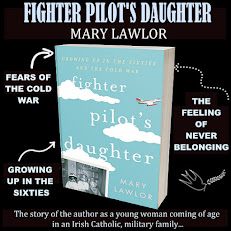





























































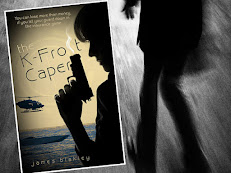








































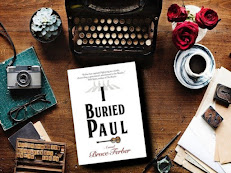
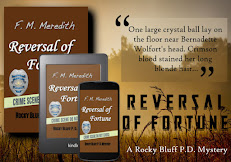




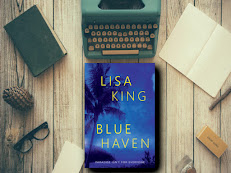







































No comments:
Post a Comment